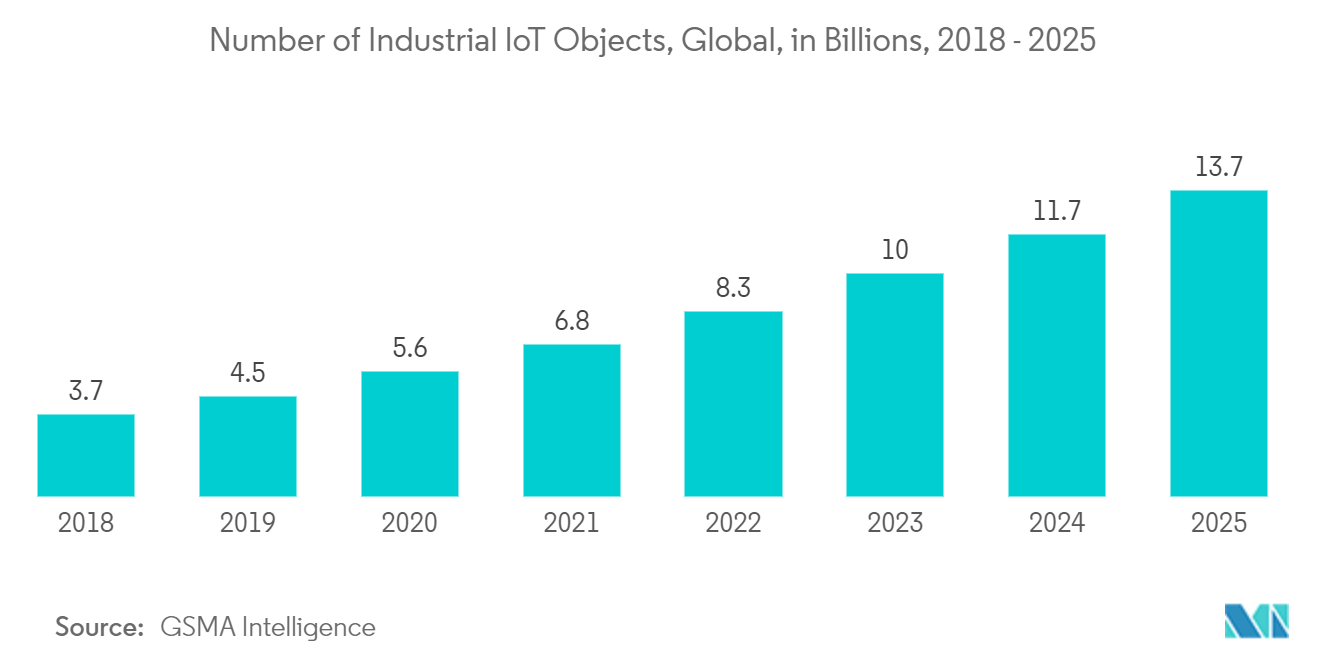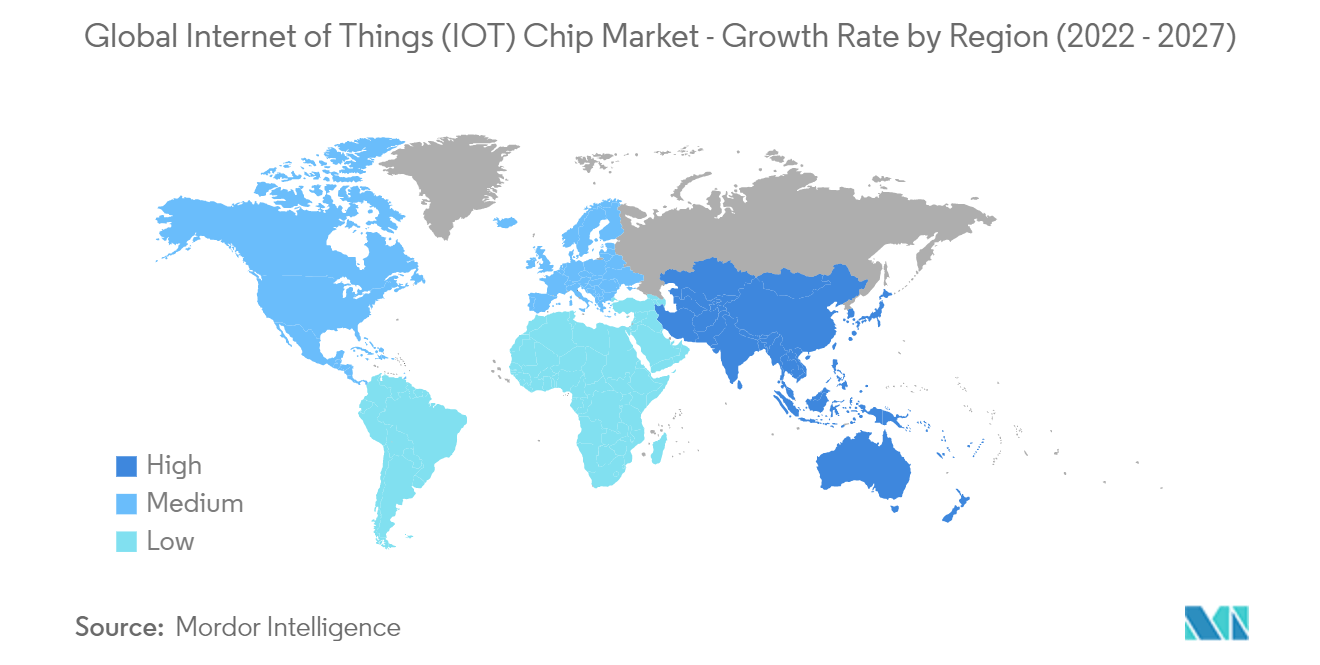Market Trends of Global IoT Chip Industry
This section covers the major market trends shaping the Internet of Things (IoT) Chip Market according to our research experts:
Industrial Segment is Expected to Witness Significant Growth
- Industry 4.0 and the IoT have become mainstream for new technological approaches in development, production, and logistics chains. The growing adoption of industrial 4.0 has kept IoT demand in manufacturing at maximum through increasing machine-to-machine connections and embedded sensors and the increasing need for factory efficiency on the floor and on the field.
- In July 2022, according to Economic Times's survey, cellular IoT module chipset shipments grew in India, and Qualcomm led the market with a 42% share. The company has been broadening its IoT chipset portfolio, targeting premium 4G and 5G solutions for verticals such as retail, industrial, smart cities, and more.
- Most manufacturers implement IoT devices to leverage predictive maintenance and sophisticated data analytics. This improves productivity and availability and adds value to their business offerings. For instance, GE is looking for opportunities in the IoT with industrial analytics. In addition, Apotex upgraded its manufacturing processes to automate manual processes. This includes ensuring consistent batch production by introducing RFID, sorting, and process flow tracking. Due to this, the company had real-time visibility into manufacturing operations.
- Furthermore, the industrial IoT trend is aided by smart factory initiatives, such as the Smart Manufacturing Leadership Coalition (SMLC) in the United States. This drives and facilitates the broad adoption of manufacturing intelligence due to massive amounts of machine and sensor data that need collection, processing, and formation of decisions.
- In June 2022, the Ministry of Foreign Affairs stated that the European market for Internet of Things (IoT) solutions is accelerating. Germany, the UK, and the Netherlands lead Europe in IoT adoption, while Eastern European and Nordic countries follow closely. The manufacturing, home, healthcare, and financial sectors are at the forefront of his IoT adoption, but retail and agriculture are also seeing impressive growth. Such advancement in multiple sectors will leverage the IoT chip market across Europe.
- The deployment of the wireless chip, including eLTE or NB-IoT chip for their manufacturing terminal, has been gaining traction over the years. For instance, Huawei collaborated with industrial partners to make smart terminals used in traditional manufacturing for uploading equipment data and receiving commands. eLTE or NB-IoT chip is added to the manufacturing terminal for transmitting data generated by the terminal via the eLTE or NB-IoT network, enabling manufacturing data to be collected and commands issued.

Asia Pacific is Expected to Witness Significant Growth
- Asia-Pacific accounts for a significant share of spending in IoT, with Singapore and South Korea as major markets adopting IoT chips. According to the Organization for Economic Co-operation and Development, South Korea is the first prominent market to connect more to the internet per habitat.
- In July 2022, KIOXIA Corporation and Western Digital Corporation announced their joint venture Fab7 manufacturing facility at Yokkaichi Plant had received approval from the Japanese government for a subsidy of up to JPY 92.9 billion. The subsidy is granted under a special government program to promote corporate investment in state-of-the-art semiconductor manufacturing facilities and ensure the stable production of semiconductors in Japan. Such collaborations in the region will help the IoT chip market to grow.
- IoT's infrastructure includes the demand for better wireless connectivity solutions to enable new phases in automation and transportation owing to the rise in demand for IoT chips and ICs in smart cities and domestic automation in the areas such as connected automobiles and smart transportation systems.
- Further, Asian governments are deeply integrating IoT in their long-term development projects. For instance, China's central government selected over 200 cities to pilot smart city projects. The cities include Beijing, Shanghai, Guangzhou, and Hangzhou. Furthermore, India's vision to transform 100 cities into smart cities is expected to promote electronics through smart homes and the automotive sector.
- In May 2022, Cyient partnered with IIT Hyderabad, India (IITH) and WiSig Networks, a start-up company founded in IITH, to launch India's first designed and engineered chip, Koala NB-IoT SoC (Narrowband IoT SoC). The Memorandum of Understanding (MOU) signed between the two aligns with the goals of MEITY (Ministry of Electronics and Information Technology, India) to build a vibrant semiconductor design and innovation ecosystem to serve the Indian world and further promote its development into a global electronics manufacturing and design hub.
- The region is expected to be a prominent provider of IoT spending as there is increased use of connected devices in sectors such as manufacturing. Increased adoption of 5G is helping the market grow in the upcoming years as there is an increase in IoT services.


